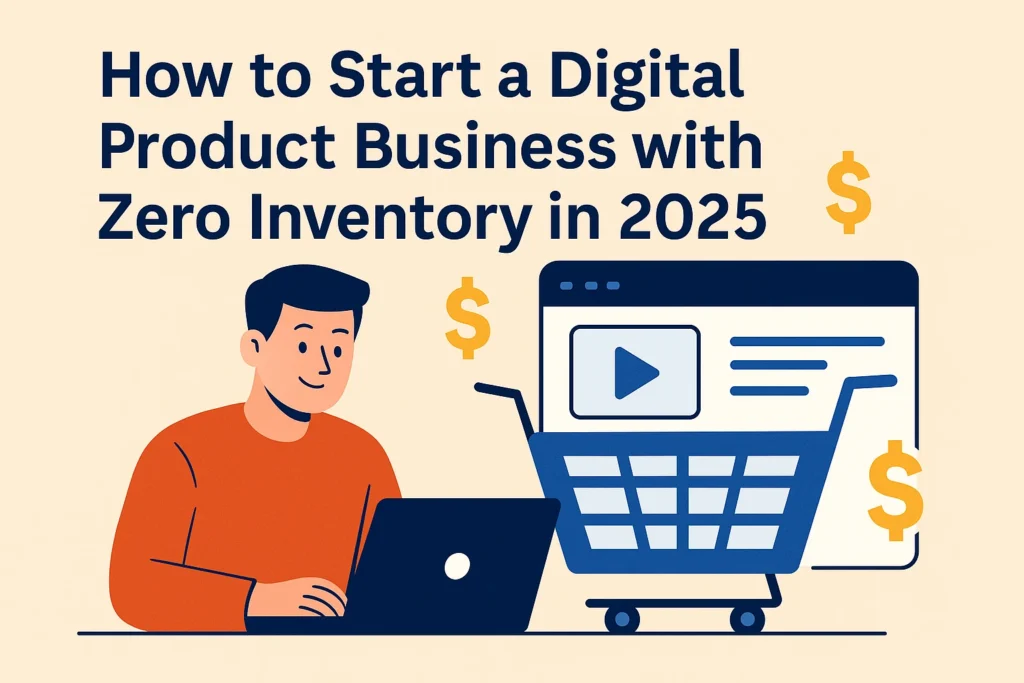In 2025, more entrepreneurs are breaking free from traditional business models and embracing the digital product revolution—where there’s no inventory, no shipping, and unlimited earning potential. Whether you’re a content creator, coach, marketer, or side hustler, this guide shows you how to launch a profitable digital product business from scratch.
🔍 What Is a Digital Product Business?
A digital product business sells downloadable or online-based assets such as:
- eBooks
- Templates (e.g., Canva, Notion, Google Docs)
- Courses
- Printables
- PLR/MRR bundles
- Membership content
These products are infinitely scalable, require no physical inventory, and can be automated for passive income.
✅ Why Start a Digital Product Business in 2025?
- 💸 Low Startup Cost – You can begin with tools you already use like Canva, ChatGPT, and Gumroad.
- 🌍 Global Reach – Sell to customers worldwide with zero shipping logistics.
- 📈 Scalable – One product can be sold thousands of times.
- 🧘🏽 Freedom-Based Lifestyle – No warehouse, no suppliers—just creativity and systems.
🧠 Step-by-Step: How to Start with Zero Inventory
Step 1: Choose Your Niche
Pick a niche you’re passionate about or have knowledge in. Examples:
- Faith-based printables (like HashtagJesus)
- Digital marketing templates
- Fitness planners
- Wedding organizers
- Small business tools
Pro Tip: Choose a niche that solves a specific problem and has buying intent.
Step 2: Decide on Your Product Type
Some beginner-friendly digital products:
- ✅ Canva templates (social media kits, lead magnets, planners)
- ✅ eBooks or guides (written with AI, proofread manually)
- ✅ Notion dashboards or Google Sheets tools
- ✅ Printable wall art or journals
Step 3: Create Your First Product
Use free or low-cost tools like:
- Canva – for templates, printables, planners
- ChatGPT – to draft eBooks or product copy
- Google Docs/Sheets – for tools and trackers
Start simple: one high-quality product is better than ten rushed ones.
Step 4: Set Up Your Sales Platform
You don’t need a fancy website right away. Here are some starter options:
- Gumroad – free to use, handles payments and file delivery
- Stan Store – great for creators with TikTok/Instagram
- Shopify or WordPress + WooCommerce (for scaling)
Also recommended:
- Payhip – ideal for selling courses or PLR
- Systeme.io – for email funnels, sales pages, and automation (free plan available)
Step 5: Design a Sales Page That Converts
Every product needs a landing page that clearly:
- Explains the benefit
- Shows what’s included (with visuals!)
- Features testimonials or reviews (real or seeded)
- Has a clear CTA (buy now, download instantly)
Step 6: Promote Your Digital Product
Don’t just build—market it!
- 🧲 SEO blog posts targeting keywords like “faith printable planner” or “Canva social media templates”
- 📱 TikTok & Instagram Reels showing before/after or product previews
- 📧 Email list for launches, upsells, and nurturing
- 📌 Pinterest for long-term visual traffic
Bonus: Use hashtags like #DigitalProducts #PassiveIncome2025 to reach broader audiences.
📦 Tools You Need to Start (Free or Low-Cost)
| Tool | Use Case | Cost |
|---|---|---|
| Canva | Design templates | Free / Pro |
| ChatGPT | Writing help | Free / Plus |
| Gumroad/Payhip | Selling platform | Free |
| Systeme.io | Funnels & Email | Free Plan |
| Notion | Productivity/dashboard tools | Free |
| Pexels/Unsplash | Free stock photos | Free |
🚀 Final Thoughts: Your First Sale Starts with One Product
You don’t need to be tech-savvy or have a big following to succeed. In 2025, the only barrier is your action. Focus on building just one high-value product that helps someone solve a problem or achieve a goal.
Once you make your first sale, you’ll realize: this model is simple, scalable, and sustainable.
💬 Want Help Getting Started?
Explore our growing library of Canva templates, PLR kits, and digital product bundles at Dekocube.com and start your journey to digital freedom today.
